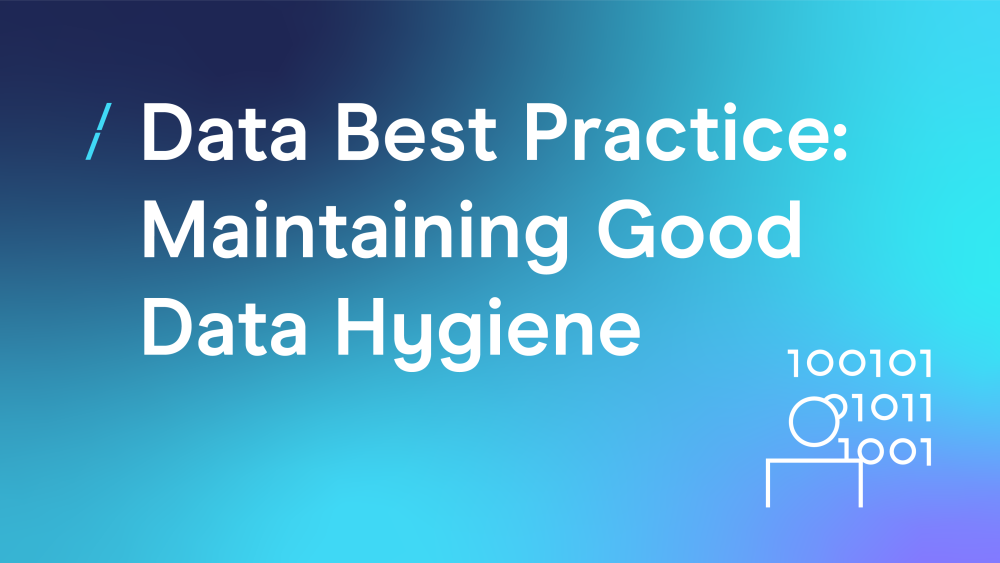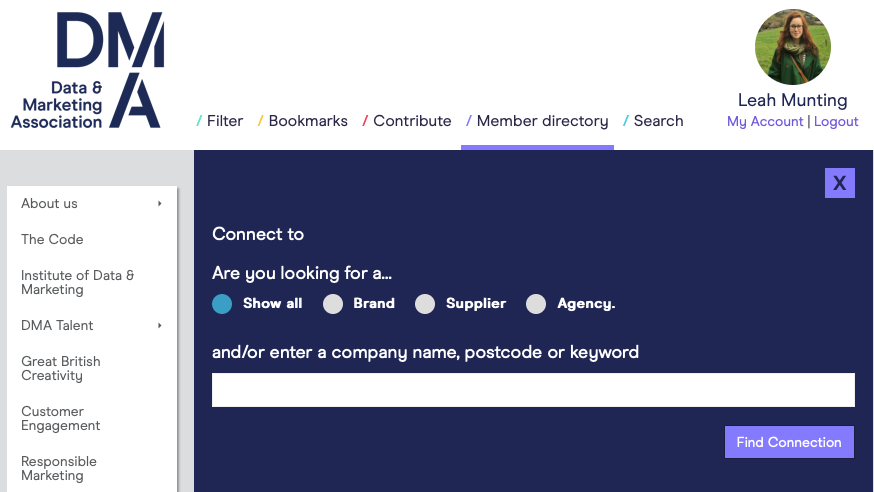Data Best Practice: Maintaining Good Data Hygiene
15 Jun 2020

This article is written by Leah Munting, chair of the Best Practice hub and member of the Customer Data Council.
We’re bringing to life the Best Practice Hub’s recent mini-series of DMA Data Guide articles showing how to achieve best practice and regulatory compliance.
Whilst we’re not currently in “normal circumstances”, in the average every year over 600,000 individuals die, people move to a new house and life events occur that lead to changes in customer data. For organisations, keeping on top of this is a constant battle. Royal Mail admit to destroying around 16 million undeliverable items per year and with a Coronavirus-related surge in the postal system, that number will increase this year.
This a huge waste of money, resources and can be damaging to a brand.
In this penultimate post, we’ll be giving more practical advice on how to keep your data clean and up to date, which is vitally important at the moment when organisations and customers need to be more aligned than ever.
Ensure you understand the law
A vital first step is to ensure you understand what mandatory regulations that affect your data and your different marketing channels. The DMA has a wealth of guides per channel to give you detailed information, which can be found here
By simply mapping your processing channels and researching the requirements, you can begin to understand what you need to put into effect. The below table – with the first line filled out - is an example of how to capture this clearly.
|
Channel |
Regulation |
Mandatory Requirements? |
Actions |
|
Outbound telephone calls |
PECR |
Screening against TPS |
> Review phone consent captured > Implement screening before outbound activity |
|
|
… |
... |
... |
|
SMS |
... |
... |
... |
|
Direct Mail |
... |
... |
... |
Capturing this will help break down steps towards compliance into manageable points.
Remember, it is a legal requirement that personal data shall be “accurate and, where necessary, kept up to date”. It is also an obligation under the GDPR, the DPA 2018, the DMA code and the CAP Code to screen your lists.
Identifying how
Once you know what your compliance steps are, you need to understand what and how to implement them. Achieving these goals aren’t always possible internally so you might need to look for external support, for example on running against industry suppressions.

The DMA Member Directory has an easily searchable interface that can connect you with DMA accredited organisations that are able to support in delivering services to optimise your data. These partners can help with a variety of data functions such as enhancing, performing deduplication or running against industry suppression lists, such as customer relocation lists or deceased lists.
As long as you perform due diligence (including any appropriate risk assessment), partnering with organisations to help you achieve an accurate and up to date database.
Identifying when
Once you know what you need to do, you should review your actions against your customer’s data lifecycle.
During the course of your customer’s relationship, you will gather a huge amount of data and information about them. By implementing an appropriate updating cycle, you make sure that data is cleaned at important moments, such as just after acquisition or any notification by the customer to you.
Running checks and updates is especially important right before any outbound activity. This ensures the data is as accurate as possible before it goes to the customer. The more accurate and up to date data is, the more effective the outbound communication will be.
Plotting your customer lifecycle and overlaying with your compliance obligations will help inform your processes as well as your policies. Remember, these are vital evidence points under the GDPR.
But keep it constant
In an era of emphasis on continual cleanliness, it is best to take the same approach to your data maintenance.
Updating records in real time – in response to events – not only shows respect for your customer, but it will also help minimise any additional data cleansing costs when you come to running them.
Data hygiene can be seen as just a cost outlay, but the impact on an organisation’s brand can be equally costly if things don’t go right. By prioritising your brand and approaching data hygiene as an investment to the overall lifetime value of your customer, the more effective and reciprocal your campaigns and relationship will be.
The risks
The GDPR-era fines issued by the ICO focus appear to have focussed on data security. Back in 2012, they did take action against Prudential, fining them £50,000 for failing to keep accurate and up-to-date records.
With positive and reciprocal customer relationships increasingly more vital and with a risk of breaking the law resulting in even greater fines than before, organisations must prioritise good data hygiene.
Need a refresher on the do’s and don’ts? See the DMA’s Data Guide, here.
See more from the Data Council, here.
Read more from our Data Best Practice series:
The Power of the Privacy Notice
The Power of the Privacy Notice - Case Study
Acquiring New Data Under GDPR - Case Study




Please login to comment.
Comments